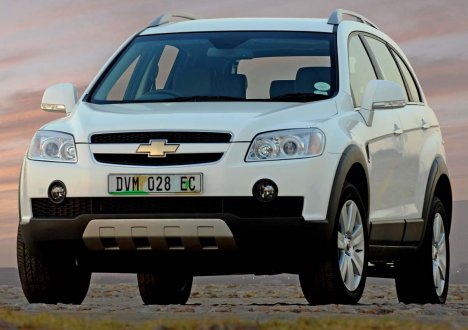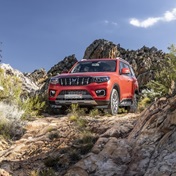
What it's about
One of the models to kickstart Chevrolet's wave of global products, the Captiva has an important role to play in the brand's continued livelihood.
But given the fervour with which it's been adopted by South Africans, it appears to be blessed with a winning formula.
The current state of fuel supplies and the economic climate does not bode well for SUVs in general, though, so how Captiva and its ilk remains to be seen.
Features
Typical chunky SUV styling dominates in a neat blend of sharp lines and soft corners. Captiva, at more than 4.6m in length, is rather big, but clever styling - particularly the short front and rear overhangs - does make it appear a lot more compact.
Interior styling is functional, even if the materials used are a heady mix of hard plastics and the ergonomics are sometimes left wanting. Finding the buttons controlling the trip computer will have you reminiscing about your Gran's fabled easter egg hunts… However, the high-mounted information display does help to unify the cabin somewhat.
Thankfully there are several pockets and recesses within the cabin in which to store your wallet, small change, chewing gum and other bobs you habitually collect.
To add to the comfort, luxury goods, especially in the LTZ trim standard on the turbodiesel and petrol V6, are extensive. Climate control and steering wheel mounted controls for the audio system are offered, along with a high degree of electric adjustment for the driver's seat. Standard rear parking assistance is useful, too.
As far as the entertainment goes, all models boast MP3-playing audio systems.
And while the third row of seats is best reserved for the family munchkins, the added versatility seven seats provide should be a great boon for some. These seats are stowed beneath the luggage floor when not in use. Darkened "privacy windows" provide a level some shade for the rear passengers.
With the seats up, accommodation for those in the two front rows is ample, but toss the second row's seats forward, too, and the flat load area balloons.

Beneath the metal
Captiva is available in three engine derivatives; a 2.4- and 3.2-litre petrol units and a 2.0-litre turbodiesel powerplant.
Wheels24 was allowed to experience the 169 kW, 297 Nm six-cylinder mated with a five-speed automatic transmission and the 110 kW, 320 Nm turbodiesel engine matched to the five-speed manual gearbox.
Both test units were fitted with an all-wheel drive system that typically powers the front wheels only, great for fuel economy while providing a more car-like driving experience.
However, when the front wheels experience a loss in traction (although throttle position, engine speed, road speed, yaw angle and steering angle are also measured), all-wheel drive is instantaneously engaged by means of an Intelligent Torque Controlling Coupling. Up to 50% of the power can then be directed to the rear wheels.
Sourced from a "major Japanese manufacturer" this system also keeps the ABS (bolstered with BAS and EBD) and ESP systems in check for added vehicle control. Captiva comes equipped with hill descent control to, once engaged by the driver, restrict speed to 7 km/h when going downhill.
Driving it
The Captiva does not purport to be a chest-beating rugged offroader, but with a few hardcore features such as hill descent control, it won't baulk at a little challenge either. It takes gravel road and imperfect road surfaces in its stride, although its beefy 18-inchers are equally at home in the suburbs.
But if the closest this softroader even comes to offroading is negotiating treacherous kerbs at the shopping mall, it certainly won't despise you for it either.
One of Captiva's most endearing features is its car-like driving quality and were it not for the raised driving position, you could be forgiven thinking you're pottering about in a station wagon. Captiva rewards with a very comfortable ride.
The V6 used produces 169 kW at 6 600 r/min and 297 Nm at 3 200 r/min. The refined unit delivers a smooth driving experience and is a pleasure a cruising speeds. Its added grunt is also useful for swift overtaking manouevres.
By contrast, the diesel is not as engaging, despite its 320 Nm on tap and the use of a four-point neutral torque axis mounting to reduce noise and vibration, especially at idle. Also, we suspect the claimed fuel consumption is a bit ambitious - Chevrolet claims 7.7 l/100 km, but we barely averaged 12 l/100 km - even with conservative driving. 
Verdict
A very capable all-rounder, the Chev Captiva is a worthy attempt at a market segment that has not previously been contested by GMSA.
It offers a good mix of looks, space and capability, while also being luxurious and a real pleasure to drive.
And considering its price and all it offers, it makes a strong case for itself. However, the lower LT spec 2.4-litre models, starting at R 253 800 for the front-wheel drive, should probably make the most convincing arguments.
Pluses
Easy-going and relaxed
Good value
Minuses
Speed-sensitive power steering too light for some
Sometimes baffling ergonomics
Fuel consumption not the best




 Publications
Publications
 Partners
Partners











